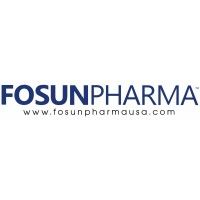预约演示
更新于:2025-10-18
Triamcinolone Diacetate
双醋酸曲安西龙
更新于:2025-10-18
概要
基本信息
结构/序列
分子式C25H31FO8 |
InChIKeyXGMPVBXKDAHORN-RBWIMXSLSA-N |
CAS号67-78-7 |
研发状态
10 条最早获批的记录, 后查看更多信息
登录
| 适应症 | 国家/地区 | 公司 | 日期 |
|---|---|---|---|
| 过敏 | 美国 | 1959-03-12 | |
| 内分泌系统疾病 | 美国 | 1959-03-12 | |
| 眼部疾病 | 美国 | 1959-03-12 | |
| 胃肠道疾病 | 美国 | 1959-03-12 | |
| 血液疾病 | 美国 | 1959-03-12 | |
| 肾脏疾病 | 美国 | 1959-03-12 | |
| 白血病 | 美国 | 1959-03-12 | |
| 淋巴瘤 | 美国 | 1959-03-12 | |
| 神经系统疾病 | 美国 | 1959-03-12 | |
| 呼吸系统疾病 | 美国 | 1959-03-12 | |
| 风湿性疾病 | 美国 | 1959-03-12 | |
| 皮肤疾病 | 美国 | 1959-03-12 |
登录后查看更多信息
临床结果
临床结果
适应症
分期
评价
查看全部结果
登录后查看更多信息
转化医学
使用我们的转化医学数据加速您的研究。
登录
或

药物交易
使用我们的药物交易数据加速您的研究。
登录
或

核心专利
使用我们的核心专利数据促进您的研究。
登录
或

临床分析
紧跟全球注册中心的最新临床试验。
登录
或

批准
利用最新的监管批准信息加速您的研究。
登录
或

特殊审评
只需点击几下即可了解关键药物信息。
登录
或

生物医药百科问答
全新生物医药AI Agent 覆盖科研全链路,让突破性发现快人一步
立即开始免费试用!
智慧芽新药情报库是智慧芽专为生命科学人士构建的基于AI的创新药情报平台,助您全方位提升您的研发与决策效率。
立即开始数据试用!
智慧芽新药库数据也通过智慧芽数据服务平台,以API或者数据包形式对外开放,助您更加充分利用智慧芽新药情报信息。
生物序列数据库
生物药研发创新
免费使用
化学结构数据库
小分子化药研发创新
免费使用


